Qijiang Farmers' Journey into Creative Fields
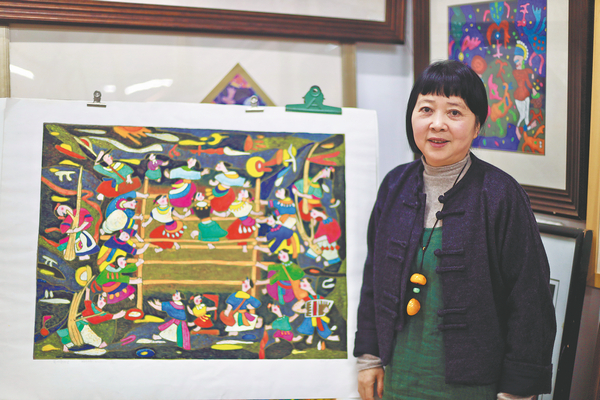 |
| Li Chengzhi shows her work Bamboo Pole Dance at her studio in the Qijiang Farmers' Printmaking Institute in Chongqing's Qijiang district in March. [Deng Rui/China Daily] |
Rural residents are adding to their income by giving visitors printmaking experience and souvenirs during the tourist season, Tan Yingzi and Deng Rui report in Chongqing.
Qijiang Farmers' Printmaking, an intangible cultural heritage of Chongqing, has been spiritually and financially enriching the lives of thousands of residents in the city's Qijiang district for decades. Now, through collaborative efforts among the art's inheritors, artists and the local government, it is empowering rural revitalization.
Qijiang Farmers' Printmaking originated from woodblock New Year prints and murals during the Ming (1368-1644) and Qing (1644-1911) dynasties and thrived in the 1980s. Since 1985, the local printmaking artworks have been exhibited in more than 40 countries and regions, including the United Kingdom, Canada, France and Germany. Over 60 foreign art groups and individuals have visited local art studios, according to a local official.
"Back in the 1980s, my folks would never have imagined a poor rural girl like me would later find a decent job and turn into an artist," says 59-year-old Li Chengzhi, a national first-grade artist and a representative inheritor of the cultural heritage.
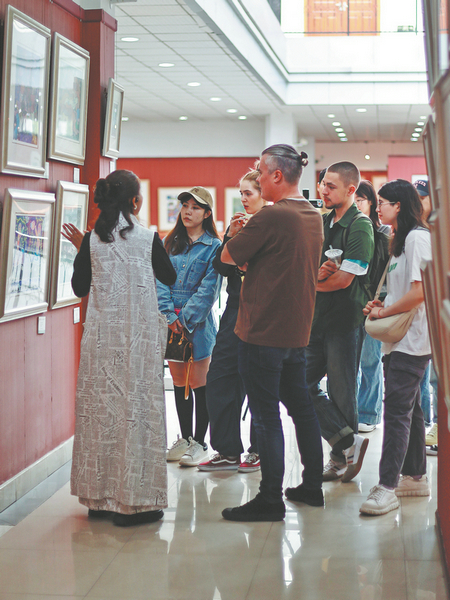 |
| A delegation of foreign visitors tours the Qijiang Farmers' Printmaking Institute in Chongqing in April. [Deng Rui/China Daily] |
Li was introduced to the art at 17, when folk paintings started to flourish across the country in the early 1980s. Li Yili, a passionate artist who was in charge of the Qijiang Cultural Center, wanted to enrich the cultural lives of local farmers. He mobilized local artists to establish over 20 rural cultural stations that offer free printmaking classes in some 10 Qijiang's townships such as Dongxi, Ganshui and Zuantang.
The teenage girl, who had never taken a painting class and had to do farm work all year round but could hardly make ends meet, showed keen interest in printmaking. Two years later, she became one of the first of over 300 locally trained farmer creators.
"I had only seen local people paintings on rocks before, while this emerging art form had suddenly made our lives more colorful and vibrant," says Li Chengzhi.
Art comes from life. Li Chengzhi's bright, colorful hues and unconstrained style on themes like farming, children, joyful festival celebrations and local legends, soon became popular.
In 1992, a customer's order to make children's prints for an elementary school earned her the first reward of 25 yuan ($3.45).
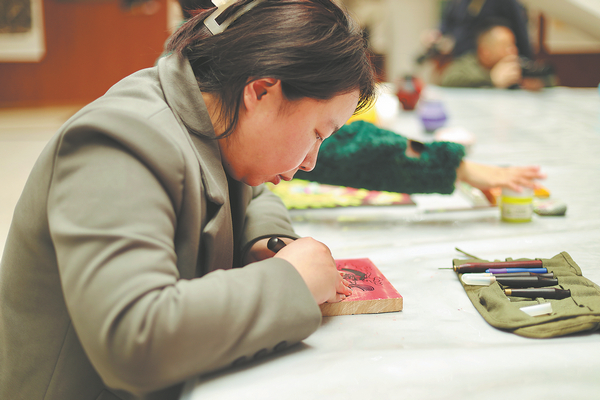 |
| An artist displays her skills at the institute. [Deng Rui/China Daily] |
"At that time, to be able to earn this money was something a farmer wouldn't even dare to dream of."
Then Li Chengzhi got a job in the local farmers' printmaking institute the same year. She got married and relocated to town, actively contributing to the preservation and development of the intangible cultural heritage.
Her sheer passion for art has made her highly productive — creating more than 200 printmaking artworks and thousands of hand-drawn illustrations by far.
In 2010, Li Chengzhi was honored as one of China's Top 10 Folk Painters by the China Federation of Literary and Art Circles and the China Artists Association. Three of her works were selected in 2012, 2017 and 2020 for the National Farmer Painting Exhibition organized by the China Artists Association, and she obtained membership. In 2013, another of her work, Five-Colored Slope, won gold at the 5th Xiuzhou China Farmers' Painting Art Festival.
"Their creations manifest their yearning for a better life," says director of Qijiang Farmers' Printmaking Institute Liu Yue, adding that the works, which usually draw inspiration from daily life of local people and also wild imaginations, present a distinctive, exaggerated, romantic and pure artistic style.
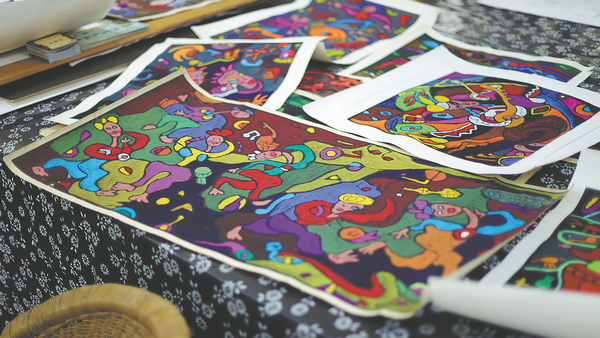 |
| Intricate patterns created by Li Chengzhi are exhibited at her studio. [Deng Rui/China Daily] |
Located at the southern gateway of the southwestern municipality, Qijiang has a rich cultural heritage and is a multi-ethnic-populated area of over 9,600 residents from 42 Chinese ethnic groups — nearly 6,000 of whom are from the Miao and Yi ethnic groups, according to local authorities.
Distinctive local folk arts including Qijiang Farmers' Printmaking — a municipal-level intangible cultural heritage, and Yongcheng Chuida (or Suona Art) — a national intangible cultural heritage, have earned Qijiang the status of "Hometown of Modern Chinese Folk Paintings" in 1988 and "Hometown of Chinese Folk Culture and Art" from 2008 to 2014 bestowed by the Ministry of Culture and Tourism.
"Growing crops is hard work, and so is printmaking," says 45-year-old Liu Qinfo, a farmer in Dongxi township who used to work in the farm all year round and run a small bookstore in his local community. "But the latter one has offered me a brand-new livelihood with brain work."
Liu Qinfo says now he could normally earn several hundred yuan during each short peak tourist season such as the Spring Festival, May Day and National Day holidays through offering tourists printmaking experience and selling printmaking souvenirs.
Despite the fact that he just started to learn the art since 2017, the creative man makes Qijiang farmers' prints — like the twelve zodiac animals, flowers, birds, fish and insects — onto stones, and promotes tourist souvenirs.
Thanks to the efforts of inheritors, artists and the local government, this traditional art is now shining with vigorous vitality.
According to Liu Yue, Qijiang Farmers' Printmaking has been included in this year's annual international cultural exchange program by the local government, and she and her team is scheduling an art exhibition in Tanzania between September and November.
A printmaking major who graduated from the Sichuan Fine Arts Institute, innovative-minded Liu Yue started to promote the distinctive art since 2014 by utilizing her knowledge and market acumen.
For example, she suggested using richer materials and colors (including gray and fluorescent), to make the works — which can be used for home decorations, tourist souvenirs and high-end collection — look more modern and elegant, and more in line with the aesthetic preferences of the young people.
She noted in the past two years, their works' market acceptance is steadily increasing.
"The art's main force are folk artists born in the 1970s and 1980s."
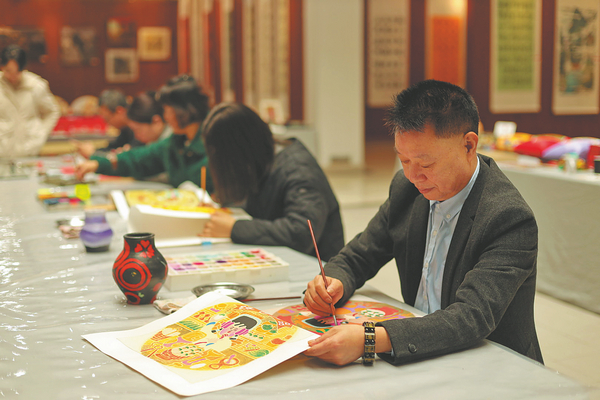 |
| Li Fangde works on prints at the institute. [Deng Rui/China Daily] |
In order to nurture future artists and promote high-quality prints, this year, Liu Yue's institute has recruited more than 40 key creators — mostly young people with basic painting skills such as teachers, enterprise employees and folk artists — for a 10-day elite creators' training session.
"A high-quality farmers' print sometimes takes three to five months to complete, through complex procedures of conceptualization, plate making, carving and printing," says Li Fangde, 59, another inheritor of the cultural heritage and the first farmer to open a Qijiang Farmers' Printmaking art studio as early as in 2003.
He calls for more young people to learn about the art form and join its inheritance base. He also hopes the traditional art could gain more market recognition at home and abroad so that local artists can keep going.
(Source: China Daily)
Editor: Lei Yang
Please understand that womenofchina.cn,a non-profit, information-communication website, cannot reach every writer before using articles and images. For copyright issues, please contact us by emailing: website@womenofchina.cn. The articles published and opinions expressed on this website represent the opinions of writers and are not necessarily shared by womenofchina.cn.

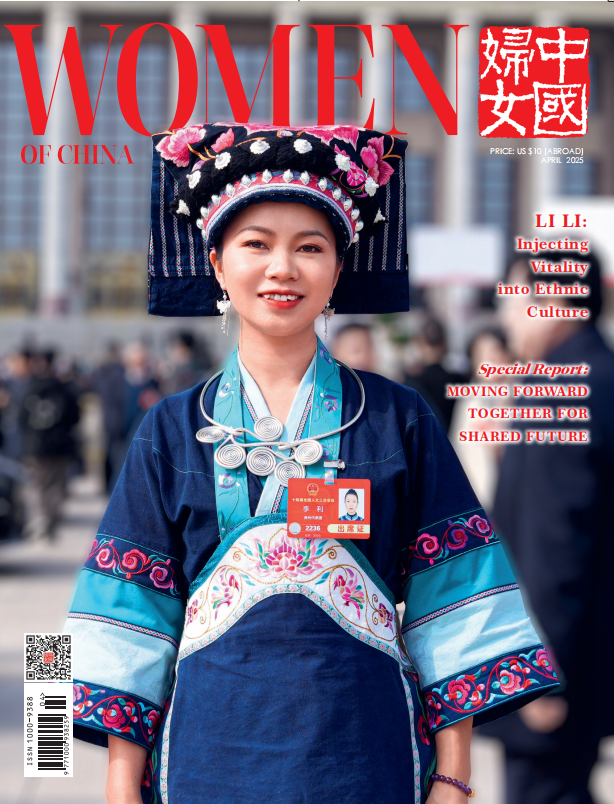





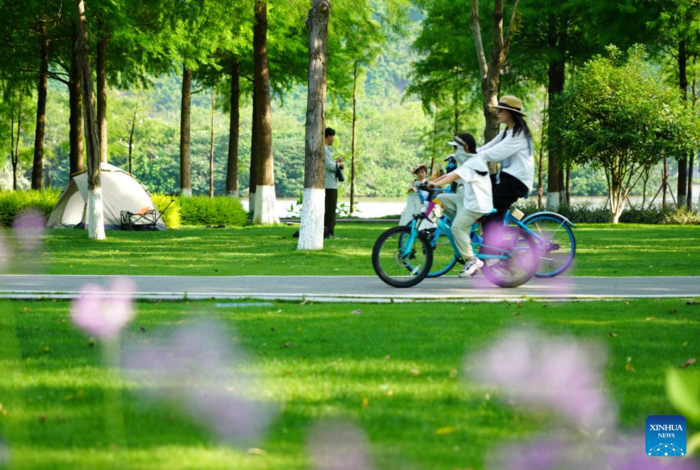
.jpg)

 WeChat
WeChat Weibo
Weibo 京公网安备 11010102004314号
京公网安备 11010102004314号